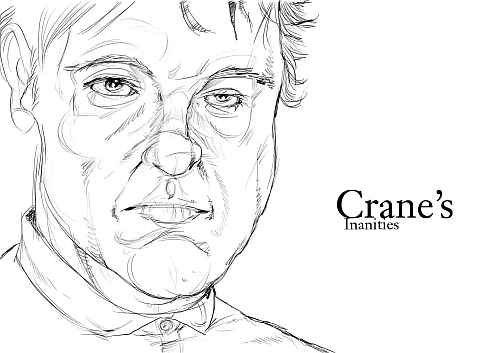
I saw "Shutter Island" on Friday.
Sorry. I've told you too much already.
 Anyway! I also finished a novel by Lorrie Moore called "A Gate at the Stairs." I don't know much about Ms. Moore beyond what the NY Times Book Review has told me, which is that she's an amazing writer and her last book was published more than ten years ago and ever since critics and literary types have been wringing their hands and drooling over the prospect of the next Lorrie Moore book. So in 2009, "The Gate at the Stairs" appeared and, based on the critical response, it exceeded already high expectations. So I had to pick it up.
Anyway! I also finished a novel by Lorrie Moore called "A Gate at the Stairs." I don't know much about Ms. Moore beyond what the NY Times Book Review has told me, which is that she's an amazing writer and her last book was published more than ten years ago and ever since critics and literary types have been wringing their hands and drooling over the prospect of the next Lorrie Moore book. So in 2009, "The Gate at the Stairs" appeared and, based on the critical response, it exceeded already high expectations. So I had to pick it up.The day after I started this book I was having a MSN chat with the owner and operator of the Hinesy.com blog and told him I was reading this book. I gave a brief (and fairly lame) description of the premise -- "A college girl takes a babysitting job" -- and he came back with some quotes from the book (taken from the internet I assume) which, admittedly, made it sound like a pretty bad book. It was pretty funny. But, despite it's young adult genre premise, "Gate" is actually a brilliant, complex and adult novel. And the writing itself, Hinesy's choice quotes aside, is actually one of the best things about it. Warm, legitimately funny, and really really smart.
The plot, roughly, concerns a college freshman in Wisconsin named Tassie. Looking for a job to keep her finances afloat while "studying" (her class-load amounts to a damning comment on the state of higher education -- in addition to wine-tasting and an intro to sufism, there's a class on war movie scores), she takes a job with a restaurant-owner/chef named Sarah Brink who doesn't have children, but is in the final stages of adopting a child. Sure enough, Sarah adopts a mixed-race toddler girl and Tassie comes on as a full-time nanny.
Assuredly bad and tragic things happen, but one of the things I liked best about the book, the thing I'll probably remember most clearly happens late in the novel, when Sarah Brink tells Tassie a story about her past. In as straight-forward a book as this, where there's no grand historical setting to rely on for mood or atmospherics, and there are no otherworldly entities to contend with when the action slows down, Moore's creation of suspense building up to the telling of this story is masterful. And she does it by putting everything into creating real characters who you come to care about and she does it all without the reader feeling the strain of her effort. As much as I'd like to lay out the secret Brink shares with Tassie, (it is devastating and beautifully told), I won't, but I will say it was nice to set the book aside afterward, get some fresh air, and reassure myself that what she'd described hadn't actually happened.
I also liked Moore's quietly scathing depiction of the adoption industry, showing that in many instances it's simply a form of legalized child-buying. After years and years of seeing adoption held up as the regret-free option for women who find themselves pregnant, it was interesting to have an adoption presented that was as emotionally damaging to the mother as the anti-choice people say abortions always are. That is not to say Moore paints the adoption process as inherently traumatic or bad, but I think she takes pains to show it as it is: an imperfect system that often seems to benefit the wealthy at the expense of the poor.
Anyway, I'm on a good-book roll with this and "2666" just before it.
Here's the one I'm into now:

It's hardcore fantasy. Not normally what I'd pick up on my own without some strong word of mouth, but the New Yorker told me that it's one of the best fantasy books written so I thought I'd give it a shot.
I'm 50 pages into this one, and I'm not sure my good book readin' roll's going to continue. Time will tell and I'll let you know.


